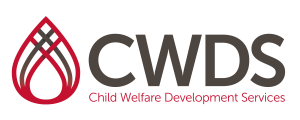CWDS Curriculum
Child Maltreatment Identification Skills Lab – Core 3.0 – Classroom
Level: Line Worker CORE
Credits: 6
Intended Audience: This course is intended for new child welfare workers and meets the state requirements for Line Worker CORE version 3.0 Assessment Block.
Description of Course: This course is intended to be an activity based skill building exercise. It offers trainer facilitated vignette activities used to provide a framework for identifying child maltreatment, using direct observation, interview and consultation.
Intended Objectives: After completing this course you will be able to:
- Identify physical, emotional, and behavioral characteristics of children who have been maltreated
- Identify cultural practices that may be mistaken for child maltreatment
- Identify when to seek consultation from agency resources, medical staff, mental health professionals, law enforcement, or forensic experts during child maltreatment identification efforts
- Use the child maltreatment indicators to identify child maltreatment in a vignette
- Using a vignette, identify cultural factors that affect child maltreatment identification including distinguishing child maltreatment from cultural factors
- Using a vignette, identify developmental factors that affect child maltreatment
- Using a vignette, critically analyze motivation, credibility and the information provided by family members and others regarding sexual abuse
- Value using a strength-based model of practice that provides a holistic view of the family as part of the child maltreatment identification process
- Value an understanding of how poverty, lack of education, community distress and environmental stressors can contribute to risk for child maltreatment
- Value working collaboratively with agency resources, law enforcement and medical, mental health, and forensic experts in identifying child maltreatment
Topics Include:
- Cultural Values
- Defining and Identifying Maltreatment
- Interviewing for Culture
- Assessing for Sexual Abuse
- Indicators of Maltreatment: Neglect, Emotional Abuse and Physical Abuse
Common Core 3.0 Assessment Block



